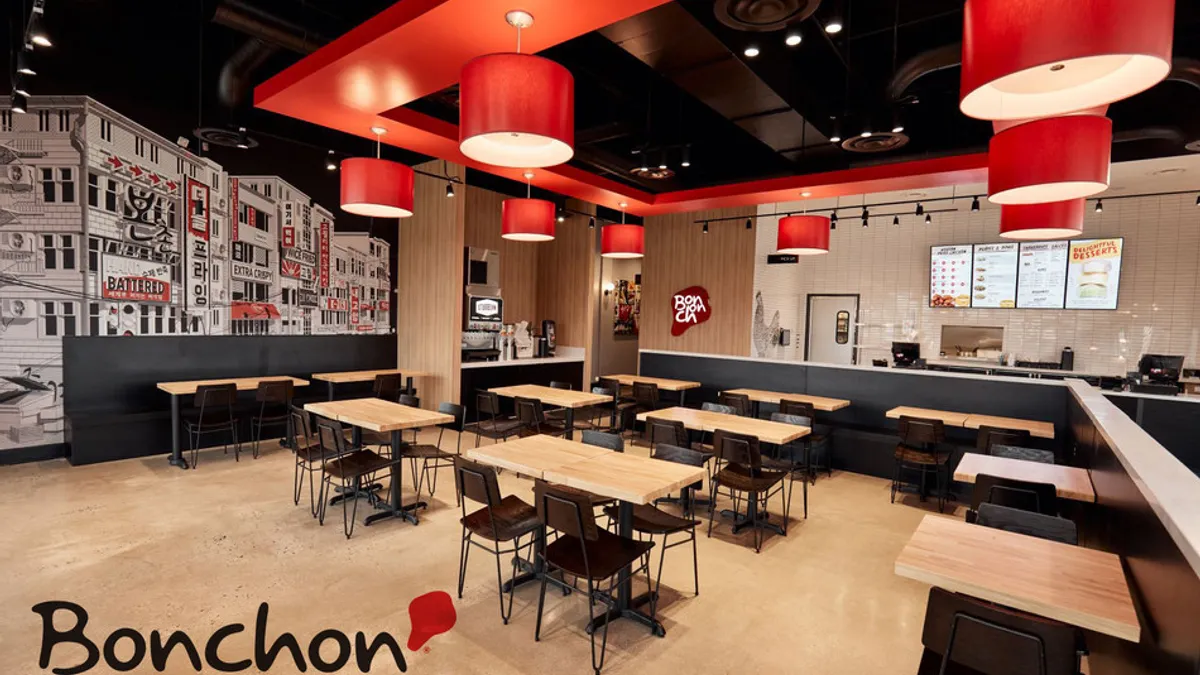Dive Brief:
- Korean fried chicken chain Bonchon plans to accelerate openings of its new fast casual model after debuting two such restaurants earlier this year, according to a press release. The chain currently has more than 110 U.S. locations and 72% of the 23 openings planned for this year will be in the fast casual format.
- Bonchon generated positive same-store sales in 2020 despite the pandemic — a rarity for the casual dining segment. Bonchon experienced 15.3% same-store sales growth as of the end of June, and the company said the fast casual format has been well received by franchisees.
- Bonchon is one of many casual dining concepts that have embraced smaller models in the wake of the COVID-19 crisis. IHOP is opening additional Flip'd locations in Kansas and Ohio, for example, while P.F. Chang's is pushing the gas on its new To Go model.
Dive Insight:
Bonchon is experiencing a significant tailwind in the digital, off-premise space, which a smaller, fast casual model can better cater to than a casual dining format. At the end of 2020, Bonchon's online ordering accounted for over 50% of its revenue.
The company cites technology and operations improvements as the drivers behind its strong performance. Those updates include a standardized point-of-sale system, the launch of online ordering, partnerships with third-party delivery companies and delivery integration through its proprietary online ordering channels facilitated through DoorDash Drive.
Growing diner demand for off-premise eating occasions has lifted fast casual sales overall. Technavio market research estimates that the fast casual segment will grow by roughly 8% annually through 2025. The NPD Group reports that fast casual transactions are driving recovery in key markets like Dallas, for example, and fast casual customer transactions in the U.S. increased by 2% in May 2021 compared to May 2019. This is compared to total U.S. chain transactions across all segments, which were down 9% in that same timeframe.
Bonchon is also experiencing a boost from the growth of Korean cuisine in the U.S. According to IBISWorld, the Korean restaurant segment is expected to increase by 5.4% this year. From 2012 to 2019, Korean concepts grew by 34% domestically, according to Yelp, with some metropolitan areas experiencing triple-digit growth.











